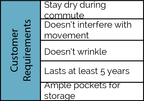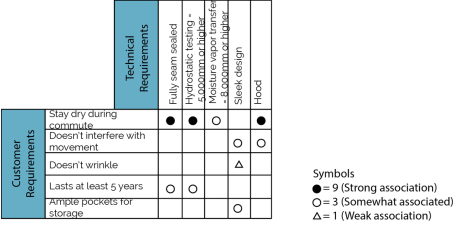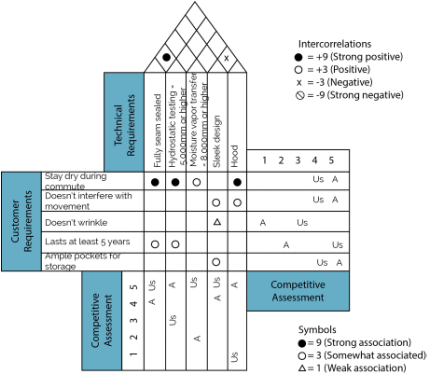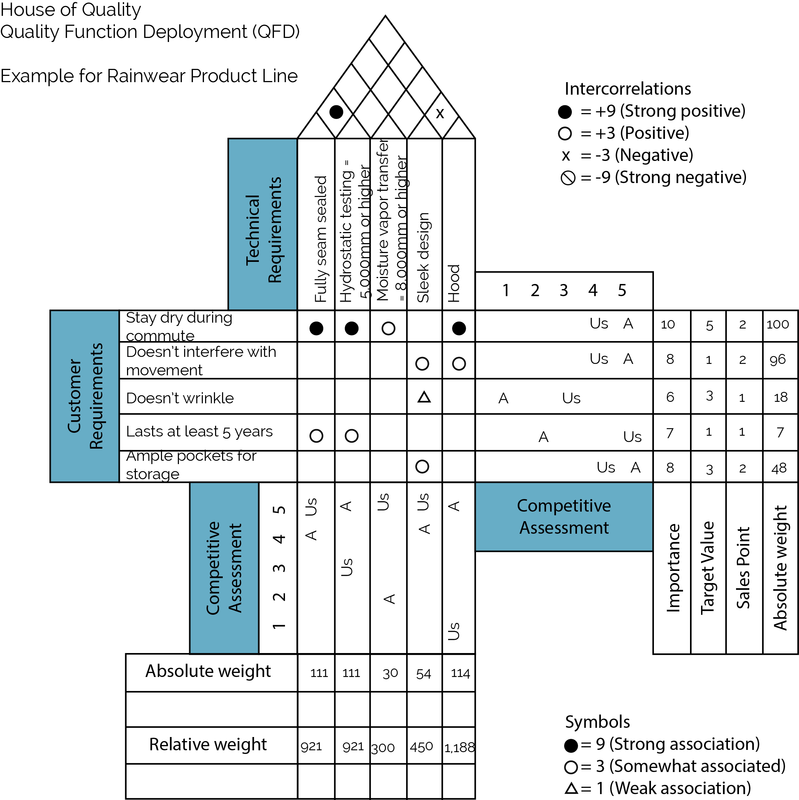 Offering quality and value to your customers means building clothing that meets the customer’s expectations. Meeting your own expectations, those of your CEO, or anyone’s impression of the customer’s expectations is not enough. You need to capture the voice of the customer. If you offer a wide range of product to various customer demographics you may need to develop product specific to the needs of each customer group. Knowing the customer’s expectations does not make your designs less creative. In fact, it helps push the creative process in new directions. Think of the boundaries set by customer needs like a party theme that creates a cohesive direction when planning party food and decor. You will still have plenty of artistic freedom. Tools to learn customer’s quality expectations:
Choose multiple methods and include at least one which allows you to prioritize, not just gather feedback. You want to find out what features but also how important those features are in relationship to each other. Focus groups and surveys allow you to ask customers to rank what features are most important in various types of garments. As an example, we will pretend to build a new line of rainwear for urban commuters. We know they will wear the coats and jackets while traveling via train, car, and bus. We can select multiple cities and conduct surveys of customers who fit our demographic profile. We will ask not only what features customers would like in a raincoat but also which features are most important. Our completed survey indicates the features in the chart to the left are the most important to our customers. Next we sit down as a team to record our normal technical requirements for a raincoat. Most of our raincoats are waterproof and seam sealed, so we list the fabric standards required. The garment will need a hood and our current brand aesthetic leans toward sleek silhouettes. Analyzing our customer requirements versus our technical requirements tells us where they are in agreement or where we need to improve to meet customers’ expectations. We will assign a symbol (or you can use numbers) to demonstrate as shown in the chart below. Two additional steps will help us to thoroughly understand the product. Do our technical requirements all work together? Or will succeeding at one defeat another? Fabric which can be seam sealed usually passes a waterproof test for hydrostatic resistance at the specified level, so those features have a high positive correlation. Adding a hood may impede our sleek design, so those features have a slightly negative correlation. Record these items above the technical requirements as shown below. Then we will analyze how we compare to a competitor for each of the customer requirements and technical requirements. For example, our standard for hydrostatic resistance is 5,000mm but competitor A typically uses fabrics which test at 10,000mm. We will rank us at a 3 and our competitor at 5 in our chart. (Want to know what a test for hydrostatic pressure is?). Do this exercise for as many competitors as needed. Finally we will assign a last group of numbers and do some math. Ugh! If you are already tired of numbers and charts you can stop here. The important point is that you have learned what features are important to your customer and have shared that information with the whole product team. But for those of you who love charts and quality management, we will finish the chart. Remember, how we asked the customers to rank how important each of the features were? Fill out the importance column with a 1-10 ranking. 10 being it is the most important feature to the customer. As a team, determine which features you want to target improving. Use the target column to give each a 1-5 rating. Five means you will improve the feature to beat the competition, 3 means you will make some improvements, one means you will leave it the same. Finally, ask the sales team (or the customers) which features would impact sales. A 2 indicates sales will be impacted and a 1 means sales will not be impacted. For instance, our customer can’t determine how long the garment will last when buying so we will give “lasts at least 5 years” a rating of 1. Almost done, if you stick with it you'll be a quality guru!. We just need to do some math. Multiply the importance x target value x sales point to get the absolute weight of the customer requirements. Once completed we see that stay dry during commute is our most important customer requirement! Example: Stay dry during commute 10 x 5 x 2 = 100 Absolute weight Remember, those numbers associated with the symbols? We will now use those to calculate absolute weight using the relationships between the customer and technical requirements. Multiply the number associated with the symbols in each column times the importance value. Example: Fully seam sealed 9 x 10 + 3 x 7 = 111 Finally, use the same relationship numbers but multiply times the absolute weight of the customer requirements to reach the relative weight. Example: Fully seam sealed 9 x 100 + 3 x 7 = 921 Whew, you are done! What does all this mean? It means, your garment really needs a hood, waterproof fabric, and seam seal tape. You already knew that, didn’t you. But did you know that it was more important than the fabric being breathable and the sleek design? It really isn’t the finished chart that is helpful, but the process you go through as a team to complete the chart. Also, you now know where trade-offs can be made during the design process. Now you can start designing! This process is known as quality function deployment (QFD). While it isn’t commonly used for apparel, it is often used for new product development projects. In fact if you were building an airplane, you would likely have to complete a QFD chart for each component of the plane with a long list of requirements. The chart is also commonly known as the house of quality because of the shape. If you want to learn more about QFD check out a good quality management book like this one by S. Thomas Foster or this article by Kenneth Crow. If you want to try building your own house of quality, I’ve attached a template you can download.
4 Comments
4/29/2023 06:41:37 am
I'd like to say that this article really forced me to do so. Really nice post! we provide.<a href="https://luminousprinting.com.sg/">T shirt printing singapore</a>
Reply
9/27/2023 08:38:23 am
I used to be seeking this particular information for a very lengthy time.we provide.Luminous Printing's T-Shirt Wonderland Styles for Every Occasion.<a href="https://www.luminousprinting.com.sg/category/t-shirts">T shirt printing</a>
Reply
7/15/2024 03:48:51 am
Quality clothing is always worth the investment! Durable, comfortable, and stylish pieces enhance your wardrobe and ensure you look great for years to come. Opt for quality, and you'll notice the difference.
Reply
Leave a Reply. |
|||||||


